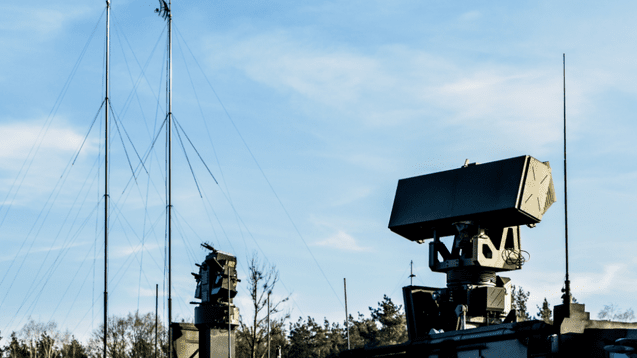Narew SHORAD: Poland Makes a Step Forward

The Armament Inspectorate of the Polish MoD has developed recommendations on the acquisition of the Narew SHORAD system. It was also assumed that the programme plays a crucial role, when it comes to the basic national security interest, as the spokesman for the Armament Inspectorate Major Krzysztof Płatek told us.
“The Armament Inspectorate has developed relevant recommendations pertaining to the acquisition of the NAREW system, nonetheless, the analytical-conceptual phase has not been formally accomplished. The assessment of the emergence of the basic national security interest has been carried out”, the release issued by the Armament Inspectorate reads.
Although the analytical/conceptual phase has not come to an end, the recommendations made by the Armament Inspectorate are expected to become a part of the feasibility study. During the Defence24 DAY conference in September, the Acting Head of the Armament Inspectorate Col. Maksymiuk announced that the organ was soon to decide on the short-range system.
During the conference, Maksymiuk was mentioning a component-driven procurement scheme, defined for the Narew system, which would be "based on two legs". This would mean that the individual elements of the SHORAD system (radars developed domestically and license-manufactured missiles) would be acquired separately, with integration happening later on, with the Wisła system, based on the IBCS air defence management system.
The second pillar upon which the Narew system could be based would come in a form of a Polish-made C2 system. “Today we indeed do face a dilemma whether it is worth to develop a C2 system of our own. We assume, right now, that it is worth to integrate the individual components procured within the framework of the Narew program, would be all integrated with the Wisła’s IBCS system. Probably it would be worthwhile to have the national, autonomous capacity within that scope”, Maksymiuk said.
In case as such, Narew system elements destined for the Air Force would be integrated directly within IBCS (3rd “Warszawska” Missile Brigade that would also receive Patriot/IBCS batteries). Meanwhile, the Polish C2 solution would be destined for the Land Forces primarily, and the coastal Navy units. Maksymiuk also added that final decisions regarding C2 would be made at higher levels of the government.
The current release issued by the Armament Inspectorate confirms that recommendations have been developed for Narew, stemming from the analytical-conceptual phase. These still need the approval from the head of the Polish Ministry of Defence. Assessment of the basic national security interest has been executed, aimed at defining the scope of involvement required on the part of the domestic industry. The Inspectorate has not shared any details within that regard, as of yet.
Narew system is the key air-defence programme. The new SHORAD systems capable of acting against fixed-wing aircraft, helicopters, UAVs and cruise missiles at a maximum range of 25 or even 40-45 kilometres should become a part of the inventory of the 3rd “Warszawska” Missile Air Defence Brigade, to complement the Wisła system. The systems in question should also be inducted in the three existing regiments, and in one air defence regiment in the making, that would all protect the Land Forces. Plausibly the Navy’s coastal elements should receive these new assets as well. The Narew system is expected to replace the obsolete Newa-SC systems in the Air Force and Kub and Osa systems in the Army.
The implementation of that programme would have a fundamental relevance when it comes to the Polish air defence component. The programme in question suffers from significant delays though, as the Narew technical dialogue was launched in 2014. The Narew system ought to integrate the Polish radars (Sajna as multifunctional fire control radars, with Bystra initially becoming the fire control radar at the early stages, and PET-PCL and P-18PL as the early detection systems), command module and the missile. Not only is it required then to define the C2 configuration, to initiate the program. The matters related to the selection of the missile that should be manufactured domestically, based on a license, are equally relevant.
The initial 2013-2022 Technical Modernization Plan assumed that 19 Narew system batteries would be procured (also with the timeline reaching beyond 2022). However, the quantity could have been changed as the 18th Mechanized Division was established. Considering the time required to carry out the procedures and to manufacture the equipment, the new systems would be received by the Polish military between 2024 and 2026 at the earliest, depending on the adopted concept. Rearming the air defence units of the Air Force and the Army would be a lengthy process. This is why definitive decisions should be made with regards to Narew.
Written with Jakub Palowski

WIDEO: Defence24 Days 2025: Premier Defence & Security Conference in CEE